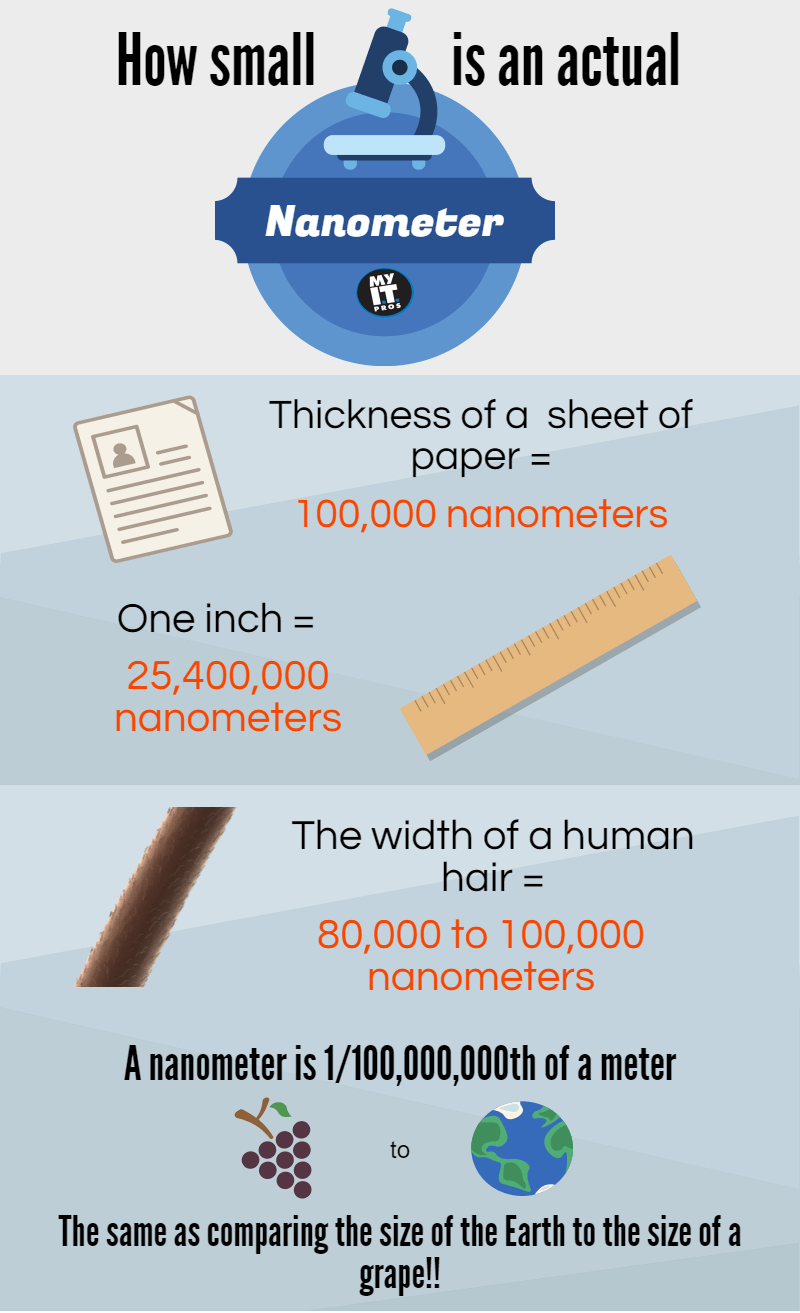
They say good things come in small packages, and in the nanotechnology field, this holds especially true. I find it fascinating that mankind not only has the ability to view something as small as a single atom, but also understands that within that atom, there are things even more miniscule to learn about. After all, the entire universe is made up of these tiny building blocks – our food, our bodies, our clothes and more – and thanks to nanotechnology, we are learning more about atoms every day.
So, what exactly is nanotechnology?
Nanotechnology is typically defined as “the branch of technology that deals with dimensions and tolerances of less than 100 nanometers, especially the manipulation of individual atoms and molecules.”
 To put it simply, a nanometer is a small unit of measurement, and when I say small, I mean really small – too small for most people to even conceptualize!
To put it simply, a nanometer is a small unit of measurement, and when I say small, I mean really small – too small for most people to even conceptualize!
Nanotechnology didn’t really become a defined field until the 1950s – more precisely, 1959, when Richard Feynman of the California Institute of Technology gave what many consider to be the first lecture on technology at the atomic scale. However, it wasn’t until 1974 that the term “nanotechnology” first appeared, and the field didn’t truly take off until the 1980s. It was then that we saw developments like the atomic force microscope and precise atom manipulation, as seen in the IBM logo below. (You can check out a full historical timeline here).
Despite its very short history as a defined field, nanotechnology has existed for centuries. Have you ever looked at a stained glass window? Brightly colored medieval stained glass windows use alternate-sized gold and silver particles to create colors, but the artists had no idea their process actually changed the composition of the materials they were working with! Stained glass windows are a prime example of early nanotechnology at its finest (and prettiest!).
Fast-forward to more modern times and you’ll find that nanotechnology has contributed to some of the most life-altering scientific and technological advances of the last 60 years – not to mention a slew of pretty cool consumer products.
Some highlights include:
- Wrinkle- and stain-resistant clothing
- Golf balls that fly straighter
- Scratch-resistant glass coatings
- And of course, for any tech aficionado, improved television, cellphone and digital camera displays
Aside from everyday innovation, what I find really dazzling about the field of nanotechnology are the strides it’s made in the medical field. Thanks to the ability to compact technology to the nanoscale, researchers can now create tiny mechanical organisms that travel to targeted locations within the human body and perform specific functions, all while being controlled from the outside. This is incredibly important for cancer patients who, while undergoing chemotherapy, can suffer extreme reactionary symptoms when the toxic chemicals affect healthy cells as well as cancerous
the ability to compact technology to the nanoscale, researchers can now create tiny mechanical organisms that travel to targeted locations within the human body and perform specific functions, all while being controlled from the outside. This is incredibly important for cancer patients who, while undergoing chemotherapy, can suffer extreme reactionary symptoms when the toxic chemicals affect healthy cells as well as cancerous
ones. Nanotechnology allows scientists to target specific areas and release the needed toxins directly to the cancerous cells only.
Nanotechnology is, in my humble opinion, one of the coolest sciences out there, not to mention a field with incredible influence over how our society will continue to evolve. If you’re interested in learning more, this YouTube video really blew my mind.
The purpose of this blog is to answer the questions you ask! To learn more about Nico and the rest of the MyITpros staff, check out our team page! If you’re interested in learning more about MyITpros and managed services (or hey, just want to talk about nanotechnology), contact us today!




